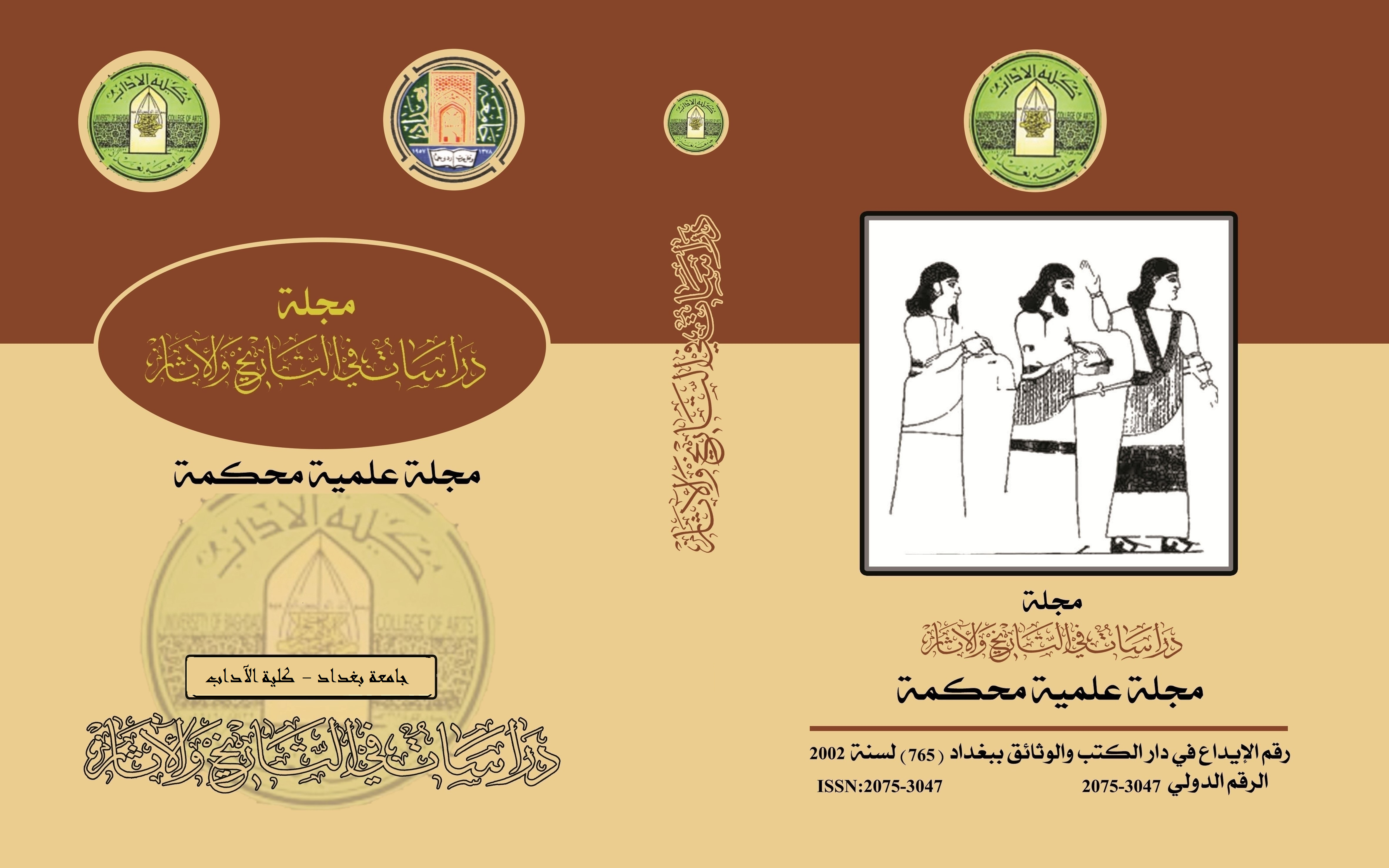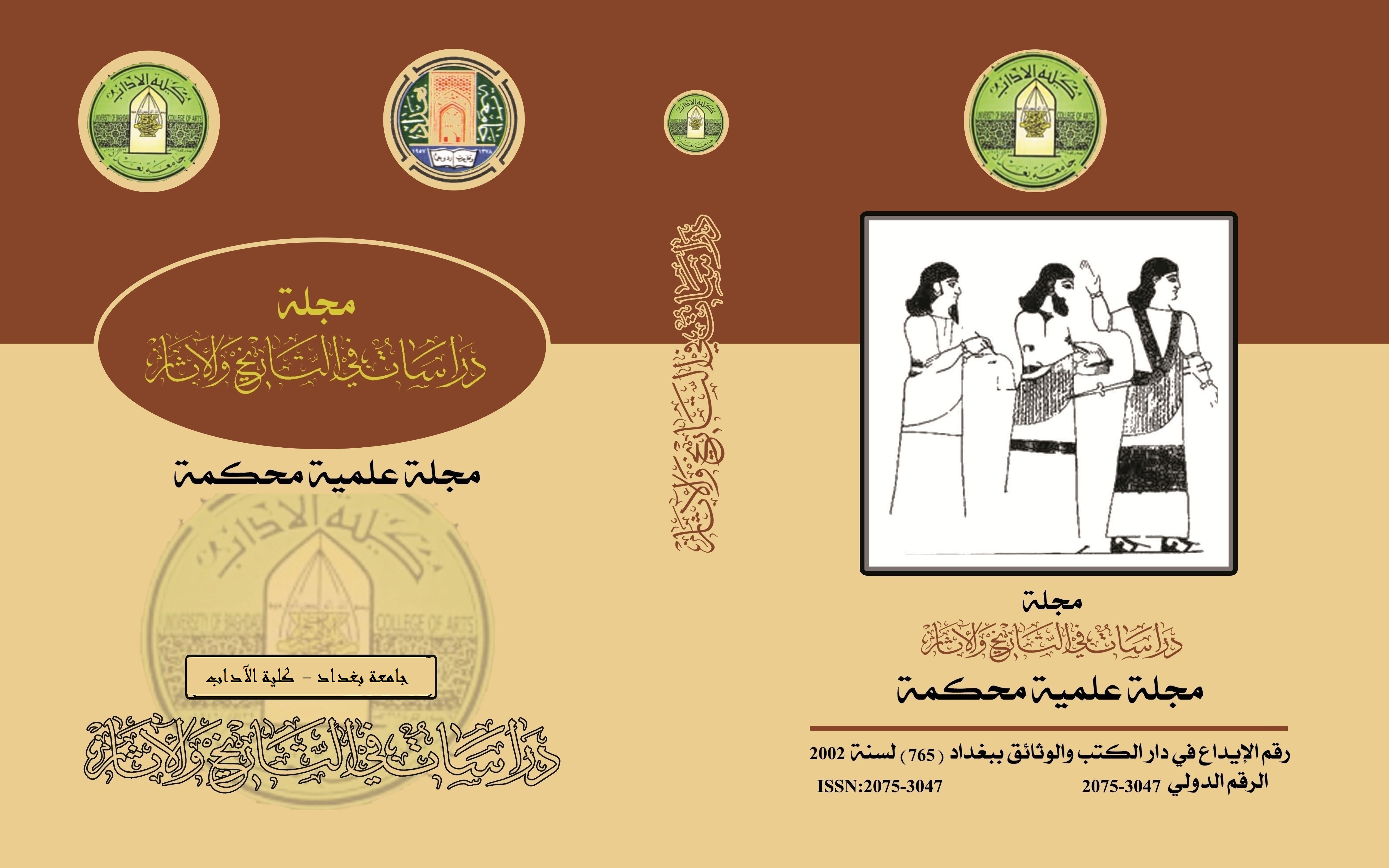دور أمراء في طقسة فتح الفم خلال عصر الدولة الحديثة في مصر القديمة
الكلمات المفتاحية:
طقس، أمراء، فتح، الفم، الكاهن سمالملخص
تعتبر طقسة فتح الفم واحدة من الطقوس الجنائزية المشهورة في الحضارة المصرية القديمة، إذ تساهم هذه الطقسة في إعادة إحياء حواس المتوفى ليتمكن من استخدامها في العالم الآخر. وقد ظهرت هذا الطقسة للمرة الأولى منذ عصور ما قبل التاريخ حيث أمكن التعرف عليها من خلال بعض الأدوات الحجرية التي كانت تستخدم ضمن اجراءات الطقسة في موقع ينتمي للعصر الحجري الحديث. ويبدو ان مفهوم ودلالة هذه الطقسة إنما ارتبطت بالطقوس البدائية التي كانت تضمن للمولود الجديد القدرة على بدء التنفس وتناول الطعام، ثم تطورت تدريجيًا وأصبح يمكن من خلالها منح المتوفى القدرة على تلقي الأطعمة والمشروبات والتي تقدم إليه كقرابين داخل المقابر بشكل يومي.
وقد مرت اجراءات طقسة فتح الفم بعدد من المراحل، حيث بدأت تطبق في بداية أمرها على تمثال المتوفى، ، ثم حدث تغيير في نهايات عصر الأسرة الثامنة فأصبحت هذه الطقسة تتم على مومياء الشخص المتوفى ذاتها. وكان الكاهن المسؤول عن هذه الطقسة يعرف باسم الكاهن "سم" وكان يرتدي جلد الفهد للتعبير عن قدراته الشرسة في حماية المتوفى. وكان الأمراء من أبناء الملوك هم من يقومون بأداء هذا الدور الكهنوتي في كثير من الأحيان، حيث أن رعايتهم لمومياء آبائهم تعتبر نوعًا من أنواع التشبه بحورس الذي يرعى أبيه أوزير. وهنا يمكن تفسير أن أبرز أمراء عصر الدولة الحديثة ظهروا بزي الفهد وبخصلة جانبية تعبيرًا عن لقبهم كابن الملك وحملوا لقب كاهن سم المختص بتأدية طقسة فتح الفم.
المراجع
قائمة المراجع
- أولا المراجع العربية والمعربة:
- إريك هورنونج، وادى الملوك (أفق الأبدية)، ترجمة محمد العزب موسى، مراجعة محمود طه، القاهرة (1996).
- سبنسر أ. ج ، الموتى وعالمهم في مصر القديمة، ترجمة أحمد صليحة، الهيئة المصرية العامة للكتاب، القاهرة (1987).
- كتشن كنت. أ ، رمسيس الثانى فرعون المجد والإنتصار، ترجمة أحمد زهير أمين، ، القاهرة (1979).
- محمد الشيمي، العطور ومعامل العطور في مصر القديمة, ترجمة ماهر جويجاتي، القاهرة (2005).
- محمد بيومي مهران، الحضارة المصرية القديمة، ج2، الاسكندرية (1989).
- محمد على سعد الله، دراسة تاريخية للكاهن سم، مجلة كلية الآداب، العدد التاسع، جـ2، الإسكندرية (1990).
- ثانيًا المراجع الأجنبية
- Blackman, A. M., Gods, Prists and Men, London (1924).
- Blackman, A. M., Sacramental Ideas and usages in Ancient Egypt, REC, vol. X, Paris (1918).
- .
- Budge, W., An Egyptian Hieroglyphic Dictionary, vol. II, New York (1978).
- Budge, W., Book of Opening the Mouth: The Egyptian Texts with English Translations, Volume 1, University of California (2009).
- Budge, W., The Liturgy of Funerary Offering, London (1909).
- Dareesy, G., "Notes et Remarques", Rec- trav, 14, Paris (1893).
- Davies, N De G., The Tomb of Rekh-Mi-Re, at Thebes, Vol. I, New York (1943).
- Dieter, A., "Hoherpriester von Memphis", LÄ, II, Wiesbaden (1977).
- Erman, A & Grapow, H., Wörterbuch für Ägyptische Sprache: Die Belegstellen, 4.bd, Berlin- Leibzig (1953).
- Gnirs, A. M., "Coping with the Army: The Military and the State in the New Kingdom", in: Ancient Egyptian Administration, ed. J. C. M, Garcia, Brill (2013).
- Kitchen, K. A., Ramesside Inscriptions, Historical and Biographical, vol. II, Oxford (1979).
- Lepsius, C. R., Denkmäler aus Ägypten und Äthiopien, Zweite Abtheilung, Berlin (1902).
- Maystre, Ch, Les grands Prĕtres de Ptah de Memphis, Göttingen (1992).
- Navratilova, H., "Khaemwaset in Dahshur: The Prince and The Stone", in: Reach & Great, Studies in Honor of Anthony J. Spalinger on the occasion of his 70th feast of Thoth, ed. R, Landgrafova & G, Mynarova, Charles University in Prague (2016).
- Price, C., "The Legacy of Prince Khaemwaset at Saqqara", Heritage 5, (2022).
- Price, P., Tutankhamun: Egypt`s Most Famous Pharaoh, London (2007).
- Redford, D., Opining of The Mouth, OEAE, vol. II, Oxford (2001).
- Roth, A. M., "Fingers, Stars and the Opening of the Mouth, The Nature and the Function of the nTrwi-Blades", JEA, 79, London (1993).
- Roth, A. M., " and the Opening of the Mouth Ceremony: A Ritual of Birth and Rebirth", JEA, 78, London (1992).
- Soliman R., "The Golden Shrines of Tutankhamun and their Intended Burial Place", EJARS, vol. 2, issue 2, (2012).
- Spencer, A. J., Death in Ancient Egypt, London (1982).
- Wilkinson, T., Tutankhamun's Trumpet: Ancient Egypt in 100 Objects from the Boy-King's Tomb, W. W. Norton & Company (2022).
التنزيلات
منشور
إصدار
القسم
الرخصة

هذا العمل مرخص بموجب Creative Commons Attribution 4.0 International License.
:حقوق الطبع والنشر والترخيص
بالنسبة لجميع البحوث المنشورة في مجلة دراسات في التاريخ والآثار، يحتفظ الباحثون بحقوق النشر. يتم ترخيص البحوث بموجب ترخيص Creative Commons CC BY 4.0 المفتوح ، مما يعني أنه يجوز لأي شخص تنزيل البحث وقراءته مجانًا. بالإضافة إلى ذلك ، يجوز إعادة استخدام البحث واقتباسه شريطة أن يتم الاستشهاد المصدر المنشور الأصلي. تتيح هذه الشروط الاستخدام الأقصى لعمل الباحث وعرضه.
:إعادة إنتاج البحوث المنشورة من الناشرين الآخرين
من الضروري للغاية أن يحصل الباحثون على إذن لإعادة إنتاج أي بحث منشورة (أشكال أو مخططات أو جداول أو أي مقتطفات من نص) لا يدخل في نطاق الملكية العامة أو لا يملكون حقوق نشرها. يجب أن يطلب الباحثون إذنًا من مؤلف حقوق النشر (عادة ما يكون الناشر).
يطلب الإذن في الحالات التالية:
بحوثك الخاصة المنشورة من قِبل ناشرين آخرين ولم تحتفظ بحقوق النشر الخاصة بها.
مقتطفات كبيرة من بحوث أي شخص أو سلسلة من البحوث المنشورة.
استخدم الجداول والرسوم البيانية والمخططات والمخططات والأعمال الفنية إذا لم يتم التعديل عليها.
الصور الفوتوغرافية التي لا تملك حقوق لنشرها.
لا يطلب الإذن في الحالات التالية:
إعادة بناء الجدول الخاص بك مع البيانات المنشورة بالفعل في مكان آخر. يرجى ملاحظة أنه في هذه الحالة يجب عليك ذكر مصدر البيانات في شكل "بيانات من ..." أو "مقتبس من ...".
تعتبر عروض الأسعار القصيرة معقولة الاستخدام العادل ، وبالتالي لا تتطلب إذنًا.
الرسوم البيانية ، الرسوم البيانية ، المخططات ، الأعمال الفنية التي أعاد الباحث رسمها بالكامل والتي تم تغييرها بشكل ملحوظ إلى درجة لا تتطلب الاعتراف.
الحصول على إذن
لتجنب التأخير غير الضروري في عملية النشر ، يجب أن تبدأ في الحصول على أذونات في أقرب وقت ممكن. لا يمكن لمجلة الآداب نشر بحث مقتبس من منشورات أخرى دون إذن.
قد يمنحك مالك حقوق الطبع والنشر تعليمات بشأن شكل الإقرار الواجب اتباعه لتوثيق عمله ؛ بخلاف ذلك ، اتبع النمط: "مستنسخ بإذن من [المؤلف] ، [كتاب / المجلة] ؛ نشره [الناشر] ، [السنة]." في نهاية شرح الجدول ، الشكل أو المخطط.



















